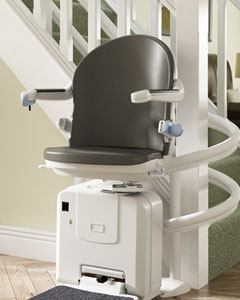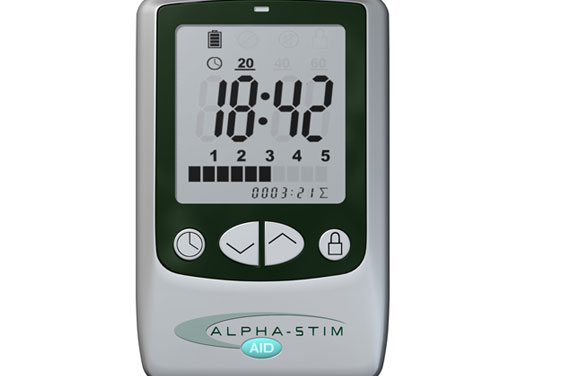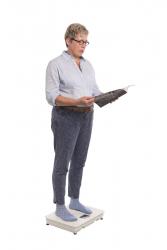Things to Consider Before Buying a Stairlift

Claire Hamilton from Stairlifts Reviews discusses what you need to think about if you’re considering buying a stairlift for yourself or a loved one. For a person with limited mobility who is struggling with the stairs in their home, getting a stairlift installed can make a huge difference to their life. A stairlift can help someone remain living independently in their own home, without being restricted to just one floor. Having a stairlift can take away the worry of using the stairs and give users the freedom to go safely up and down the stairs without the danger of falling. Although there are lots of benefits of buying a stairlift, there are a number of things to consider before parting with your cash. Read on to find out what you need to take into account if you’re thinking of purchasing a stairlift. Type of Stairs A key consideration is what type of staircase you have. This will determine whether you can get a stairlift with a readymade rail or whether you will need to have a rail custom made. Straight stairlifts are designed to be fitted to straight stairs that go in one direction without any turns. They can be fitted to a standard premade rail, which costs less than a bespoke one. A straight stairlift can be installed very quickly as there is no need to wait for the rail to be made especially. Some companies even offer a same day or next day installation service. If your stairs have bends or turn corners then you will need a curved stairlift with a rail made specifically to fit the exact contours of your staircase. Curved stairlifts are more expensive because there is more work involved in building a rail to fit curved stairs. There will also be a longer wait of several days or weeks between having your stairs surveyed and the rail being built. In the UK there are a lot of older houses with narrow staircases. You may be concerned that your stairs aren’t wide enough for a stairlift to fit. It is always worth seeking advice from a stairlift supplier, as there are models that can be fitted to narrow stairs. For example, if a standard seated model is too wide, a perching or standing model may fit instead. The User’s Needs Another crucial factor to consider is the needs of the person who will be using the stairlift. There are different models that are suited to different needs, as well as optional extras that can be added if required. Someone with arthritis in their hands may find an ergonomic control easier to use. A powered swivel seat can be useful for someone who finds it difficult to use a manual seat. Someone who has difficulty bending their knees or hips may find a perch seat is more comfortable than a standard seat that requires the user to sit down. A stairlift supplier will be able to assess your requirements and advise on the most suitable model. Budget One of the first things people want to know is how much a stairlift will cost. Prices of stairlifts vary and depend on the exact requirements of each individual, but a stairlift can be a significant financial outlay. In some situations it can work out cheaper to rent a stairlift rather than buy one. However, rental generally is only cost effective in the short term, perhaps if the user only needs help with the stairs while they recover from an operation. For people who are likely to use a stairlift for a long time, buying is probably more economical. Some stairlift companies sell reconditioned stairlifts. These are second hand models that have been fully safety checked and come with a warranty. They cost less than brand new ones, but will be older and will have been used by someone else previously. If you’re looking at saving money by getting a second hand stairlift, buying a reconditioned one from a reputable supplier is preferable to buying from a private seller. You won’t get any guarantee from a private seller and may have an expensive repair bill if the lift breaks down. If money is tight you may be able to get free financial aid to help with your purchase. Disabled Facilities Grants are available from local authorities. These are means-tested and your income and savings will be taken into account. If you don’t quality for this type of grant, you may be able to get help with funding from a charity. After Sales Support One other important thing to consider is what support you’ll get if your stairlift breaks down after you’ve bought it. Be sure to ask about this before you make your purchase. Reputable companies will offer at least a 12 month warranty on parts and labour. They should give you a phone number you can ring in the event of a fault or breakdown. This gives you the peace of mind that an engineer will come to fix your stairlift as soon as possible. Get More Information Getting a stairlift can improve your quality of life by helping you maintain your independence and taking the daily struggle out of using your stairs. The first step is to have your stairs assessed and get a quotation. Visit www.stairliftsreviews.co.uk if you have further questions or want to arrange a home visit.
The UK’s first discount card for people with disabilities has arrived

Introducing the Diversability Card, the official discount card for people with disabilities, providing exclusive and market-leading discounts with the UK’s favourite brands, service and entertainment providers. The card has been founded by disability rights campaigner Shani Dhanda, who lives with a rare genetic condition called Osteogenesis Imperfecta, more commonly known as Brittle Bone Disease, affecting only one in 15,000 people in the UK. With mainstream media throwing out images of unattainable perfection, lacking any social and cultural relevance to ethnic minority communities, raising awareness around disability and diversity is Shani’s passion. ‘I had the idea to create the card a few years ago after completing my dissertation research, which explored the barriers to accessible leisure for people with disabilities. My research showed that tangible barriers, such as poor accessibility was not the main reason why many individuals of this consumer group feel discouraged to go shopping or enjoy a meal out. Further recent research from Scope, revealed a shocking three quarters (75%) of people with disabilities and their families have left a shop or business because of poor disability awareness or understanding,’ said Shani. Therefore, the Diversability Card has been created in response to the exclusion and alienation disabled customers face whilst accessing services and visiting places like shops or eateries as a necessity of daily life. Not only does the Diversability Card aim to support people with disabilities, it aims to educate businesses and service providers through training and highlighting specific changes and improvements that will make a difference to the millions of people who often miss out. Shani is now calling on consumers with disabilities and businesses to support the new scheme, providing a win win situation for both parties. ‘Any local, national and international business or service provider can sign up to become a Diversability Card brand partner at no cost, making an investment to over 12 million disabled people (that’s almost 1 in 5 of the population) in the UK, and commitment to inclusion of this overlooked consumer group’ said Shani. Many businesses are missing out on this potential customer base and their share of £420 million of revenue a week by having everyday products and services which aren’t available to people with disabilities. In turn, people with disabilities are regularly excluded from experiences and opportunities that many others take for granted. Failing to cater to people with disabilities is equivalent to excluding the populations of London, Birmingham, Leeds, Sheffield, Cardiff and Manchester combined. Seven million people of working age have a disability, which all adds up to an awful lot of spending power. The latest figures from the UK’s Department of Work and Pensions in December 2016 estimate that this spending power, the so-called “purple pound”, is worth £249 billion to the economy. It is no surprise to hear that people with disabilities and their families face many extra costs, from expensive equipment to higher energy bills – paying over the odds for essentials. These additional costs add up to an average of £550 a month and the annual cost of bringing up a child with a disability is three times greater than that of bringing up a non-disabled child. Even with the extra support from Disability Living Allowance to help cover these costs, it doesn’t reflect the true current cost of living, meaning welfare payments fall far short of meeting these extra costs. With the change from Disability Living Allowance to the new system of Personal Independence Payment, the way people are assessed means more than 600,000 people with disabilities could lose support. The Diversability Card aims to alleviate this financial pressure and drive down the extra costs people with disabilities face every month with the support of the nation’s favourite retailers. Sign up today to apply for the Diversability Card at www.diversabilitycard.co.uk
5 great accessible days out in County Durham

If you’re looking for an accessible day out in the North of England, you won’t find many better regions to visit than County Durham. The area is a treasure trove of activities that are both fun and educational, with plenty to do and see. To help you plan your trip, we’ve listed our five favourite accessible attractions in the county, with something to suit everyone. Read on to find out more. Hall Hill Farm Who’ll love it: Younger visitors and animal lovers. Hall Hill Farm is a fantastic day out for the whole family, with plenty of animals to pet and feed, as well as a host of activities to take part in. Most of the main farm is tarmac, with gravel paths leading away to various paddocks. The farm is generally flat, but there are some slight inclines around some of the enclosures. There is disabled parking available, as well as large print leaflets with daily event listings. One carer is admitted free of charge with a disabled visitor, and there are also staff on hand who can help with any issues you may have. More information here. Beamish Museum Who’ll love it: History buffs, children, and those interested in taking a stroll through time. Beamish is a large, open-air museum with real historic buildings set out to create the feel of a small town during the 19th and early 20th centuries. It’s a unique experience: you can visit the old school house, take in a farm, and buy from genuine old-timey shops, among many other activities. It’s fairly easy to get around Beamish, with a regular accessible bus running throughout the site. The only areas that aren’t accessible are the Drift Mine and the old train carriage. There is also dedicated disabled parking and carers can accompany a disabled person free of charge. More information here. Durham County Cricket Club Who’ll love it: Sports lovers, particularly those with an interest in cricket. For cricket fans, there isn’t a better day out in the region than taking in a match at Durham County Cricket Club. The Riverside ground has excellent accessibility, with wide doors, lifts, and ramps where required, as well as dedicated bays with ample room for a wheelchair and carer (who also get in free) to sit and watch the game. Disabled parking and toilet facilities are also available. More information here. National Museum of the Royal Navy Hartlepool Who’ll love it: Those who want to experience a genuine slice of maritime history in a unique setting. NMRN at Hartlepool is situated around a historic quay, where visitors can travel back in time to a period when the likes of Nelson and Napoleon ruled the waves. The attraction has something to offer everyone, with fun activities and games to thrill children and interesting exhibits and gift shops to interest adults. The quayside is wheelchair accessible, and there is disabled parking and toilet facilities available. One of the highlights, the moored HMS Trincomalee, also has access ramps for the upper decks. More information here. Durham University Botanic Garden Who’ll love it: Lovers of nature who want to discover new things and those looking for a chilled day out. The Durham University Botanic Garden is a beautiful, relaxing place to visit, home to many interesting and varied species of plant from around the world. You can tour the garden yourself or arrange a guided tour if you wish, while there are also activity trails for children to take part in. The visitors centre and nearby glass houses are easily accessible by wheelchairs, and most of the other paths are fine apart from one or two that have a steep incline but can be easily avoided. A parking space can be reserved if required, and there are accessible toilet facilities available on-site. Carers enter free. More information here. So, if you are thinking of visiting the region, keep these five attractions in mind when you’re planning ahead. Not only are they very accessible, but they’re guaranteed to give you a fantastic day out too.
Saucepan designed by student to help elderly people with arthritis stay independent

A saucepan to help elderly people with arthritis keep their independence has been designed by a student who was inspired by her grandparents. Emma Bucknell, a BA (Hons) Product Design student at Nottingham Trent University, has designed the saucepan to make cooking more comfortable for people who have arthritis in their fingers, hands and wrists. It has been made with a plastic handle on one side so users can slide their hand through it, meaning the saucepan can be lifted using the strength in the arm rather than in the hand. The design of the handle aims to reduce the weight and pressure that is put on people’s fingers and hands when they lift saucepans, which traditionally have straight handles. Emma, a student in the School of Architecture, Design and the Built Environment, said she came up with the idea for her product after seeing her own grandparents struggle with arthritis. She said: “I know from my grandparents that arthritis is a painful and uncomfortable condition. My nan struggles with lifting saucepans so I took the opportunity to find a solution to help them.” During her research into arthritis Emma said she discovered that long thin handles can be a problem for people who have the condition or a weak grip, because the hand has to form an unnatural position while holding on to them.It is made out of aluminium so it is light to hold and the handle is designed to fit a wide range of different sized hands for the most comfortable use. On the other side is a spherical handle which people can hold, to evenly distribute the weight of the saucepan when using both hands.According to Arthritis Care around 10 million people suffer from arthritis in the UK. Emma said: “I can see that arthritis does not just affect a person with its painful symptoms, it affects their whole life. What many people would see as a simple task, can become difficult and sometimes impossible for those with the condition. This can destroy independence; the one thing elderly and retired people desire to keep.” James Dale, principal lecturer in Product Design at Nottingham Trent University, said: “Emma has seen first-hand how difficult it can be for people with arthritis to carry out tasks such as cooking and she has used this experience to create a product that could improve people’s confidence and independence. “The saucepan has the potential to go beyond the elderly market and reach others who have the same condition.”
Effects of CES on childhood autism beneficial according to new study

UK autism expert and neuroscientist, Dr Lorene Amet conducted a pilot evaluation to determine the effects of the Alpha-Stim Cranial Electrotherapy Stimulation (CES) device on child autism… Dr Amet comments, “This is a small scale evaluation, but it has been very beneficial to reduce issues related to anxiety, sleep and pain. There was a diminution of restricted, repetitive, self-stimulatory behaviours: hand flapping and twirling both in frequency and intensity. The effects of CES were that children improved physically, and became more engaged.” “Social disengagement had been lessened because the Alpha-Stim has a calming effect and rebalances the central nervous system. It helps to bring about an equilibrium and improved wellbeing” “I recently conducted a trial with five parents on the Alpha-Stim. One family did not use it, another used it one or two days, but felt they had not used it enough to judge it. Of the remaining 3 families, each child used it on average for 5 or more days a week for a month. The results were positive.” “Parents rated their child’s anxiety out of 5 before and after, and there was on average a 2 point drop. They commented: ‘Calmer in the mornings after using Alpha-Stim.’ ‘Hyper ventilation totally stopped. And two of the three families reported an improvement in their child’s sleep. ‘More restful.’ ‘Sleep more hours over the week.’” Lorene’s findings are backed up by a China study on the Alpha-Stim, which found “Compared to baseline scores, the SAS [The Zung Self-Rating Anxiety Scale] standard score of all subjects significantly decreased and returned to a normal value (<50) after the treatment…’ “I am very, very excited by what the Alpha-Stim can offer to those with autism.” The Alpha-Stim AID retails for £549 or on a buy-to-rent scheme from £51 a month. Visit www.alpha-stim.co.uk or 01487 208041.
Low Intensity Vibration therapy for care home residents launches in UK

Marodyne is a new, Vibration therapy medically-approved device that uses low-intensity vibration (LIV) to safely deliver gentle and consistent vertical vibrations to help restore motion to joints, redevelop muscles, facilitate bone healing, increase bone mineral density, prevent and reverse the complications of osteoporosis and ease osteoarthritis. Marodyne is supported by a leading Scientific Advisory Board and considered safe by OSHA and ISO Standards. It is certified as a class 2a medical device under the Medical Device Directive 93/42/ EEC Annex II and meets the standards set in ISO 2631 for mechanical vibration. It has no contraindications or side effects. Sheila Scott OBE, a former care homeowner and recently retired as the National Care Association CEO, says: “I immediately saw the potential of low-intensity vibration therapy for the elderly. Those who are physically inactive and unable to exercise will benefit from the boost in circulation and cell stimulation provided by this low-intensity vibration training. If I were managing a care home today I’d be very keen to offer the Marodyne LIV treatment.” People stand on the Marodyne platform for 10 minutes a day to gain health benefits including: Falls Prevention – by stimulating and restoring the dynamic action of muscle fibres in the legs which help to give better balance, postural reflexes and co-ordination while improving muscle strength and stimulating new muscle growth. Active Ageing – by stimulating blood circulation and lymphatic flow and improving leg strength, encouraging mobility, flexibility and independence. Osteoporosis – by maintaining and increasing bone mineral density, speeding up bone healing, and increasing the quality of fracture repair. Osteoarthritis – by improving metabolism, boosting blood flow and helping ensure the nutrients necessary for cartilage formation are pumped efficiently into the joint cavity. www.marodyne.com
VIDA Mobility Partners with Patron, introducing a new range of buggies to the UK & Ireland

VIDA Mobility have partnered with Patron Bohemia to add a new range of buggies to our growing portfolio of products. Patron was established in 1994 in Prague and is a well-known and respected supplier for rehab buggies for children. Vida Mobility is delighted to have been selected as the exclusive distributor in UK and Ireland for the Corzo X Country, Tom Streeter and the Dixie Plus. Corzo XCountry The Corzo XCountry is a Lightweight, Durable, Robust rehab Buggy. Offering the user a multi-purpose rehab buggy, available in four different size ranges, the Corzo can accommodate a range of different users with a maximum weight limit of 75kg. Tom 5 Streeter The Tom 5 Streeter is designed to meet the postural and comfort needs of your child. Offering a variety of positional and interchangeable features, the Tom 5 Streeter is available in three different sizes, mini, standard, maxi. The maximum weight limit of the buggy is 50kg ensuring maximum stability for the user. Some important features include a lightweight chassis, which folds away compactly, ensuring the buggy can be stored away easily and efficiently. Dixie Plus The robust, lightweight rehab buggy with a modern . The Dixie Plus is ideal for newborns and children under 30kg. This innovative Buggy, ensures the child can achieve maximum comfort and postural support. VIDA Global is the new sales and customer care company created by James Leckey Design. We bring the best advice, support products and services all to your door. For further information on these new products contact VIDA Mobility on 02892600750 or email info@vidaglobal.co.uk or check out our website www.vidaglobal.co.uk
6 Benefits of Owning a Mobility Scooter

There are many reasons as to why you may need a mobility scooter. Whatever those reasons may be, a mobility scooter is a significant investment. Everyone knows how devastating it can be when you’re stuck at home, ill, unable to move with just newspapers and the TV to keep you company. But limited mobility should not get in the way of you or a loved one, enjoying an exciting and fulfilling life! Below are a few of many benefits of owning a mobility scooter. Increase Accessibility Modern mobility scooters fit in brilliantly with the ever-changing ways in which people socialise. With shopping centres and public spaces constantly improving accessibility, it is becoming much, much easier for mobility scooter users to access these sorts of places. Another benefit is that portable mobility scooters can usually be taken on public transport. Injury Prevention Whether you’re older or just don’t have the physical strength, falls that cause injury become a real risk. With the aid of a mobility scooter, chances of fall-related injuries are decreased significantly. There are several other reasons to why you or a loved one may need a mobility scooter, such as recovering from surgery. Owning a mobility scooter limits the physical exertion needed to move around. This freedom can allow for a much more comfortable healing process. Home Demonstration Investing your time and money into a product feels much more satisfying when it comes from a supplier who has years of experience in helping those with limited mobility. Companies such as Fenetic Wellbeing offer home demonstration on their mobility scooters for a small fee. Home demonstrations are a terrific way to get hands-on information from a specialist. Simple to Operate Certain mini/portable boot and mid-range mobility scooters such as the Sterling Sapphire 2 can be assembled in less than a minute. The majority of mobility scooters are incredibly simple to manoeuvre and operate, wherever you wish to use them. You can recharge the batteries from the comfort of your own home. Be sure to read the manufacturers guide, or ask about the correct way to charge your mobility scooter, as overcharging will cause a gradual decrease in power. Increased Independence Mobility scooters are ideal for those who tire easily. It is essentially an electric vehicle that allows you to get out and about without the use of an assistant or carer. Increased independence is inevitable, but mobility scooters have more than physical benefits. Psychological benefits from being able to leave the house when it suits you, and peace of mind for both you and your loved ones, make owning a high-quality mobility scooter the perfect long-term investment. There Is A Scooter for Every Need People are different and have different requirements. Fenetic Wellbeing organises them into three main categories, based on the most popular uses for each type of scooter. Below is some information that can help determine which mobility scooter is right for you. • Mini/portable scooters are the smallest type of mobility scooter available. They are very lightweight and designed for everyday use, making them ideal for days out trips to the supermarket. • Mid-range scooters are a medium sized scooter designed for longer journeys and suitable for either indoor or outdoor use. Larger than their mini counterparts, comfort and versatility comes from robust suspension to handle rough terrain, a fully adjustable chair, and pneumatic tyres as standard. • Road legal (class 3) mobility scooters are the largest and most comfortable type of mobility scooters on the market. All road legal mobility scooters have lights, indicators, horn, and rear-view mirrors to comply with legislation. They do not, however, require a license or insurance to use. Be sure to consult your doctor to ensure that the health benefits offered by a mobility scooter are right for you.
Rollator or Triwalker: Which is Best for Your Mobility?
With so many options for your mobility assistance around these days, it’s difficult to know what to choose. Each mobility user has different needs, routines, and requirements for their day, and finding a walker that will work for you can be a tough job with so much equipment to choose from. To make your decision a little bit easier, leading mobility aid retail providers Manage at Home are comparing their two most popular walkers. The Rollator is a wide four wheeled frame with a basket and brakes, and whereas the Tri-Walker is a narrower three wheeled mobility frame. Considering issues such as their weight, support, ease of use and additional functions, the Rollator and the Triwalker have been put through their paces to decide just which walker will work for you. Shopping Trips We understand that when you have limited mobility, a simple trip to the shops can be a much bigger challenge than anticipated. You need to feel supported, with the peace of mind that your walker can get you there and back with no complications. Whilst the Triwalker does have its merits during shopping trips, being equipped with thinner frames for those difficult aisle turns and easy manoeuvrability, the Rollator is designed to be sturdy enough even during the longest trips. Its shock absorbent wheels are ideal for getting down the uneven high street roads, most frames have a pre-installed basket for carrying heavy items and they even come with a seat for restful stops between stores. For shopping: Rollator Travelling on Public Transport Whether you’re planning a day out, visiting friends, or simply heading to an appointment, public transport is a necessary part of life for those with limited mobility. So, it’s important that whatever walker you choose can work with that, and will be a help rather than a hindrance. For short distances, the Rollator’s durable frame can support you on even the bumpiest of buses, and it’s reliable braking system can help keep you grounded on awkward journeys. However, if you’re heading out on a long-distance journey, on a coach or a train for example, the Tri-Walker is the walker you want. The benefit of its triangular frame means it can be easily folded away and neatly stored until the journey’s end, without taking up room and making your transition from travelling to walking even easier. For travelling: Tri-Walker Walking the Dog If you refuse to let limited mobility stand between you and your favourite stroll, then you’ll need a walker that supports all of your rambling needs. Luckily, both of our walkers are fully equipped for those longer stretches, so you never need to miss out on an afternoon jaunt. The Rollator, for example, has the strong handles, wide frame and comfortable grip for those who need more upper body strength to keep them walking, whereas the Tri-Walker has the nimble frame and optional basket hooks for lighter, uphill treks. For long walks: both! Only you know what goes into your day, and what you want your walker to help you achieve. So, whether you’re a stroller, shopper or seasoned traveller, taking a Tri-Walker or a Rollator home with you can help to support, balance and improve your mobility when out and about.